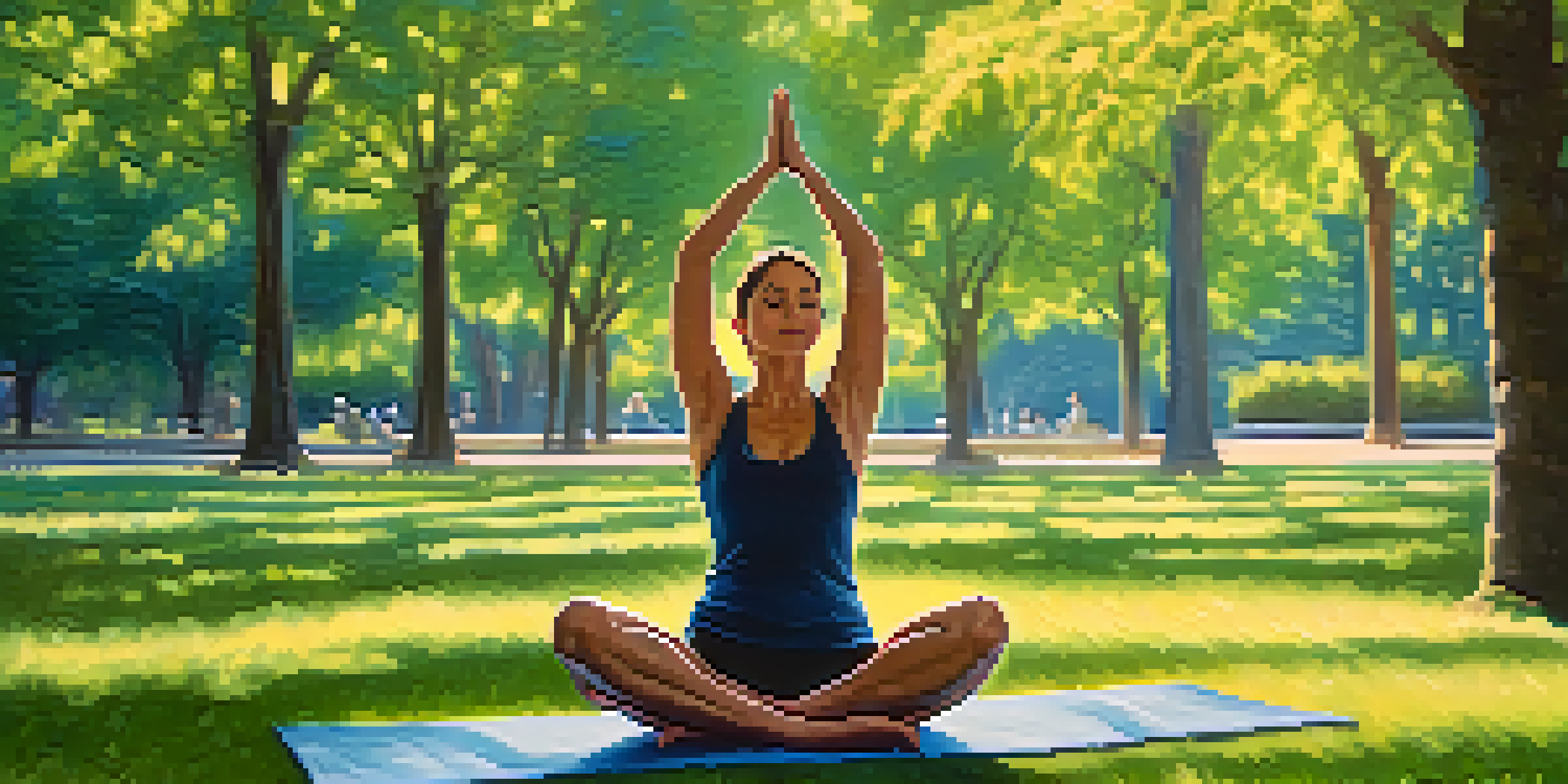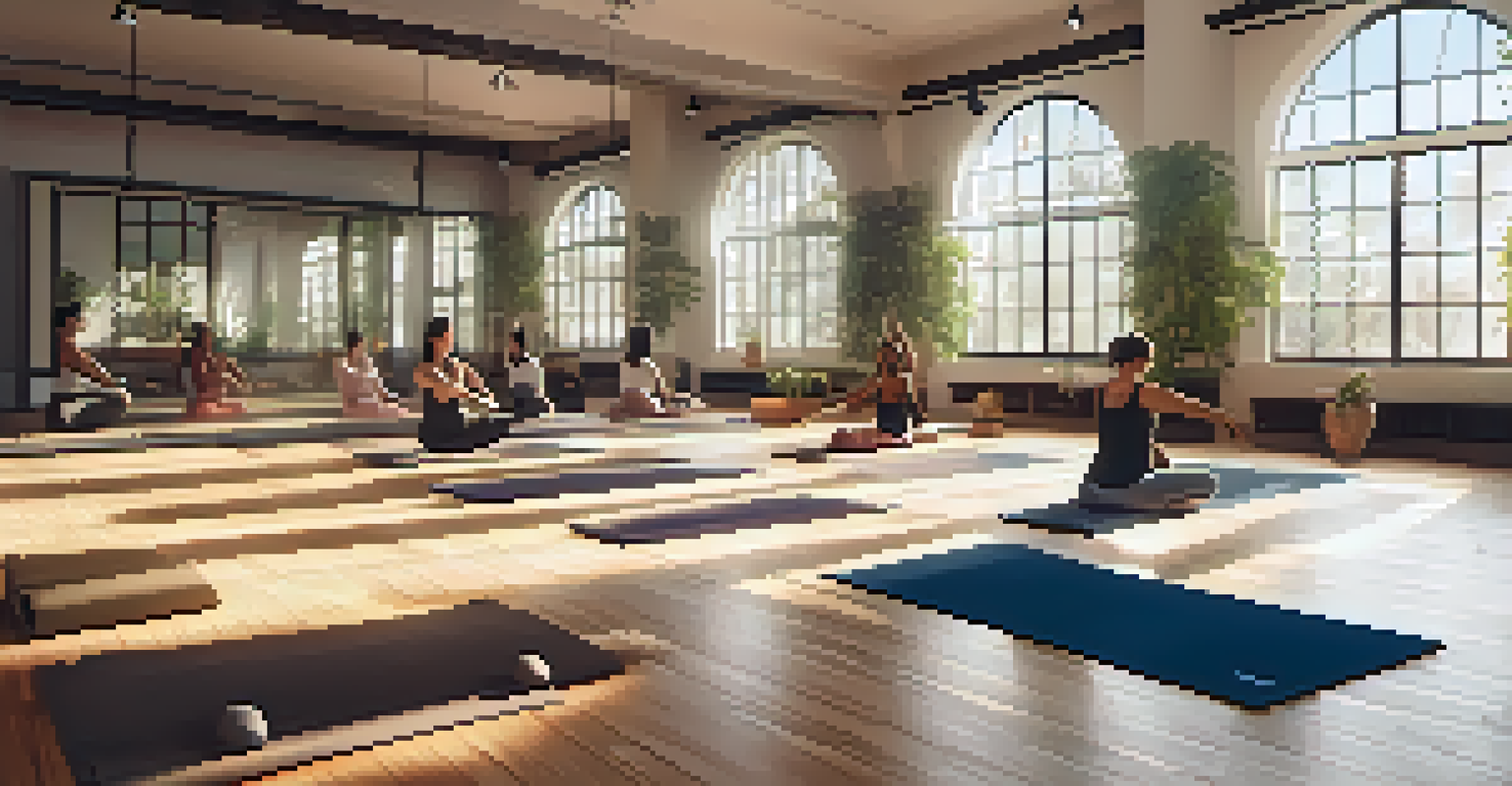How Yoga Improves Proprioception and Body Awareness

Understanding Proprioception and Body Awareness
Proprioception refers to our body's ability to sense its position and movement in space. It's like having an internal GPS that helps us navigate our physical environment without always needing to look. Body awareness, on the other hand, encompasses a broader understanding of how our body feels, moves, and interacts with the world around us.
The body says what words cannot.
These concepts are crucial for overall coordination and balance, impacting everything from athletic performance to daily activities. When we’re more aware of our body, we can move with greater efficiency and reduce the risk of injury. This is where yoga comes into play, providing a platform to enhance these skills.
By practicing yoga, individuals can develop a deeper connection to their body, which can lead to improved proprioception. This heightened awareness can transform how we engage with our surroundings, making simple actions feel more grounded and intentional.
The Role of Balance Postures in Yoga
Many yoga poses focus on balance, which directly challenges and improves proprioception. When you stand on one leg in a tree pose or shift your weight in a warrior pose, your body must continuously adjust to maintain stability. These adjustments are a form of proprioceptive training that enhances your body's awareness of its position in space.

As you practice these poses, you begin to notice subtle shifts in your weight and how your muscles engage to keep you balanced. This awareness not only strengthens your proprioceptive abilities but also helps in developing better posture and alignment in everyday movements. It's like tuning into a radio station that helps you listen to your body more clearly.
Proprioception Enhances Movement
Improving proprioception through practices like yoga leads to better coordination and reduces the risk of injury.
Over time, the benefits of these balance postures extend beyond the yoga mat, aiding in activities like walking, running, and even dancing. Improved balance translates to greater confidence in your physical abilities, allowing you to engage more fully in life.
Mindfulness and Its Impact on Body Awareness
Mindfulness is a core principle of yoga that encourages practitioners to stay present in the moment. By focusing on your breath and the sensations in your body, you cultivate a heightened sense of awareness. This practice can lead to an increased understanding of how your body moves and feels, which is essential for improving proprioception.
Yoga is the journey of the self, through the self, to the self.
When you tune into your body during yoga, you start to notice areas of tension or discomfort that you may not have been aware of before. This awareness allows you to make adjustments, both physically and mentally, enhancing your overall experience and effectiveness of your practice. It's like shining a flashlight on dark corners of your body, revealing insights that were previously hidden.
As you become more mindful, you’ll likely find that your body awareness extends beyond your yoga practice. Daily activities become opportunities to engage with your body more consciously, leading to improved coordination and reduced strain.
Breath Control: A Key Component of Proprioception
In yoga, breath control, or pranayama, plays a significant role in enhancing body awareness. By focusing on your breath, you can create a deeper connection between your mind and body. This connection is essential for proprioception, as it helps you tune into the subtle cues your body provides.
When you practice breath control, you learn to synchronize your movements with your breath, promoting a sense of flow and harmony. This synchronization can enhance your ability to gauge your body's position and movements, improving your overall proprioceptive feedback. It's like conducting an orchestra, where each element must work in unison for a beautiful performance.
Balance Poses Boost Awareness
Yoga poses that focus on balance challenge the body, enhancing its awareness of position and stability.
Ultimately, this practice of breath control allows you to become more aware of your body's limitations and capabilities. As you refine your breath, you also refine your ability to engage with your body mindfully, leading to enhanced proprioception.
Yoga's Impact on Muscle Strength and Flexibility
Regular yoga practice contributes significantly to building muscle strength and flexibility, both of which are crucial for proprioception. Stronger muscles provide better support for your joints, leading to improved stability and balance. Flexibility, on the other hand, allows for a greater range of motion, enhancing your ability to sense your body's positioning.
As you work through various poses, you're not just stretching or strengthening; you're also training your nervous system to understand how your body moves. This increased strength and flexibility lead to enhanced proprioceptive feedback during both yoga and other physical activities. It's akin to tuning a musical instrument, where each adjustment improves the overall sound.
Incorporating strength and flexibility training into your routine through yoga can have long-lasting benefits, helping you maintain physical health and mobility as you age. This holistic approach fosters a deeper awareness of your body's capabilities, encouraging a more mindful movement approach.
How Yoga Can Help with Injury Recovery
Yoga can be a powerful tool for rehabilitation, particularly when it comes to recovering from injuries. The gentle movements and focus on body awareness allow individuals to reconnect with their bodies after trauma. This reconnection is essential for rebuilding proprioception, which can be diminished following an injury.
Through specific poses, practitioners can gradually regain strength and flexibility, while also enhancing their awareness of how each movement feels. This process not only aids physical recovery but also promotes mental resilience, helping individuals navigate their healing journey with confidence. It's like planting seeds of strength and awareness that will blossom over time.
Mindfulness Elevates Body Awareness
Practicing mindfulness in yoga promotes a deeper understanding of how the body feels and moves, improving overall proprioception.
Additionally, yoga can help prevent future injuries by teaching individuals to move mindfully and listen to their bodies. This newfound awareness can translate into better decision-making in physical activities, creating a safer, more informed approach to movement.
Integrating Yoga into Daily Life for Better Awareness
Integrating yoga into your daily routine doesn't require hours of practice; even a few minutes can significantly enhance proprioception and body awareness. Simple stretches or mindful breathing exercises can be done at any time, allowing you to reconnect with your body throughout the day. Think of it as a refreshing pause that recharges your awareness battery.
By making yoga a part of your daily life, you cultivate a habit of checking in with your body. This ongoing practice helps reinforce the improvements in proprioception you gain during your yoga sessions, creating a continuous feedback loop of awareness. It's like watering a plant regularly, encouraging it to grow and thrive.

Ultimately, these small, consistent practices can lead to profound changes in how you experience your body, enhancing both your physical and mental well-being. Embracing this approach allows you to live with greater intention and connection to your body.